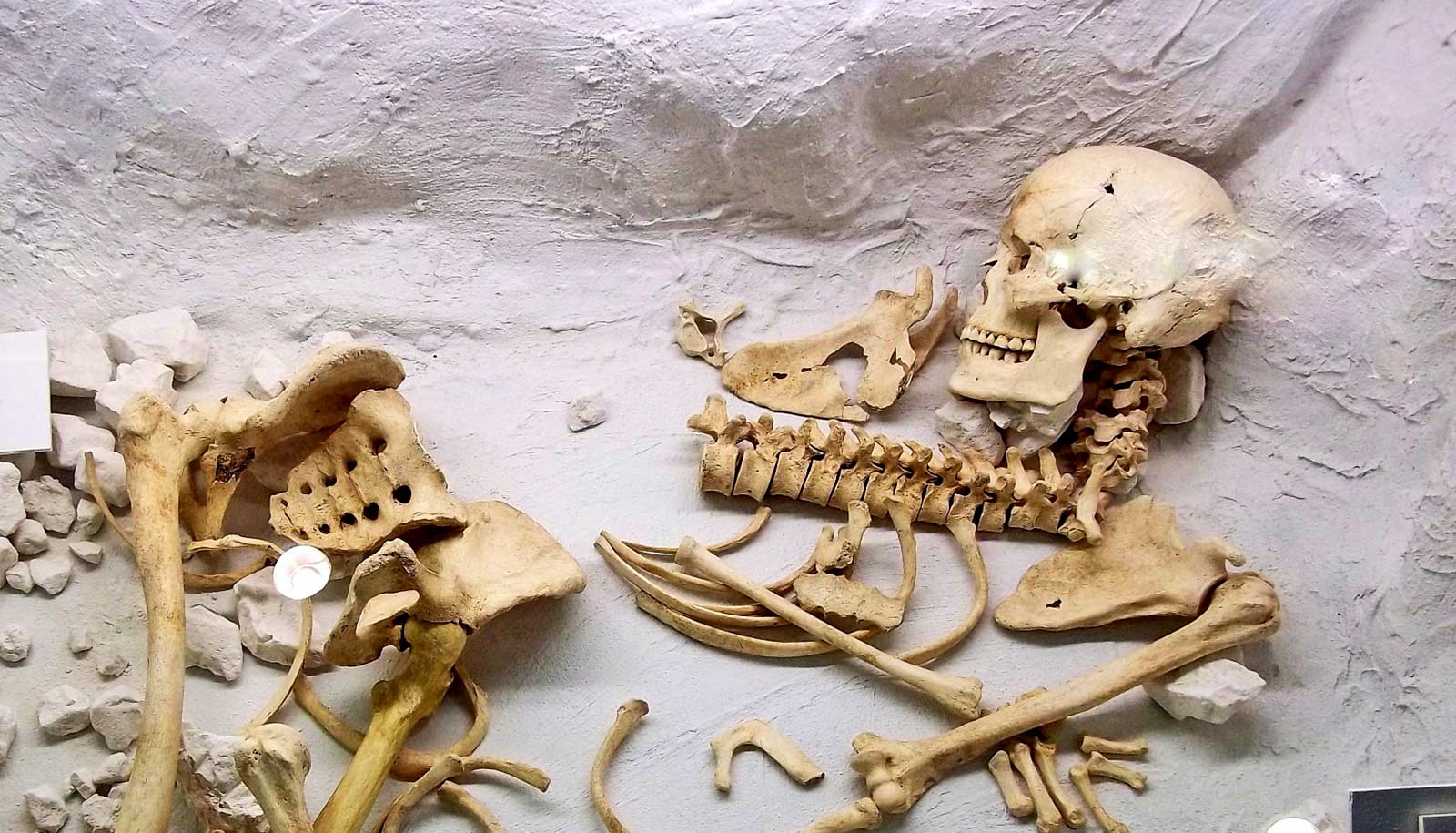New research documents a major migration into Britain during the Late Bronze Age that would displace half the genetic makeup of England and Wales.
The massive scale of the study challenges previous notions of the origins of Celtic languages and culture in Britain, says Douglas J. Kennett, a professor of anthropology at the University of California, Santa Barbara and one of the 223 coauthors of the paper in Nature.
“It now appears that these migrations played out over centuries and involved the peaceful mixing of populations,” he says. “It shows that the movement of smaller populations over centuries can result in major changes in ancestry. In this case, half the ancestry of all later British populations.”
In analyzing the DNA from the remains of 793 individuals from the Middle to Late Bronze Age, the researchers discovered large-scale migration into southern Britain from around 1300 to 800 BCE. These newcomers so thoroughly mixed with the native population that by 1000 BCE they accounted for roughly half the genetic makeup of southern Britain by the Iron Age, which began about 750 BC.
The researchers can’t yet say where the migrants came from, but they suspect present-day France.
Kennett’s group directly radiocarbon dated 123 individuals with genome-wide data to between 1300-800 BCE.
“These chronological data were a critical component of the study because previous work suggested that large-scale movements of people into Britain occurred hundreds of years later in the Iron Age,” he says. “These data also indicate that population movements from continental Europe were not abrupt, but persisted through the Middle to Late Bronze Age and were largely complete by 1000-875 BC.”
Language spread
There’s a good chance the migrants into Britain contributed more than their genes. As the study notes, big population movements often drive cultural changes, including the languages people speak. Did the Bronze Age migrants bring Celtic languages with them? The answer: maybe.
Some researchers have said other studies provide evidence of Celtic being brought to Britain from present-day France at the end of the Bronze Age or in the early Iron Age. (Irish, Welsh, and Scottish Gaelic are all Celtic languages.) Given the coinciding migrations into Britain, the coauthors write, their “identification of substantial migration into Britain from sources that best fit populations in France provides an independent line of evidence in support of this, and points to the [Middle to Late Bronze Age] as a prime candidate for the period of this language spread.”
Lactose tolerance
What’s more, those ancient migrants are likely responsible for Britons’ love of dairy products. The researchers found lactase persistence in about 50% of the population compared to around 7% in Central Europe, which didn’t see a rapid rise of it until 1,000 years later.
Kennett, who has studied the expansion of populations in Eurasia during the Bronze Age, notes that it was fueled, in part, from the use of secondary animal products such as milk, cheese, and yogurt. But those earlier continental populations didn’t have the allele for lactase persistence, suggesting milk products were most likely fermented or consumed by younger lactose tolerant individuals.
“The allele for lactase persistence does not develop in continental Europe for another millennium,” he says, “but our study indicates that it developed in Britain earlier, during the Late Bronze age, in concert with the transition in ancestry. This suggests that cultural changes in the consumption of milk products during this transition resulted in genetic changes in the British population favoring milk consumption.”
While dairy products may have played a key role in humanity’s expansion in Europe, science and technology are the drivers of new research and discoveries in our understanding of ancient populations.
“Ancient DNA and paleogenomics research are radically changing our views of mobility and migration in the ancient past,” Kennett says. “Our study, the largest of its kind conducted thus far, indicates that the movement and mixing of ancient populations was much more common than previously thought and that half the ancestry of later British peoples came from continental Europe.”
The University of York, Harvard Medical School, and the University of Vienna led the study.
Source: UC Santa Barbara


